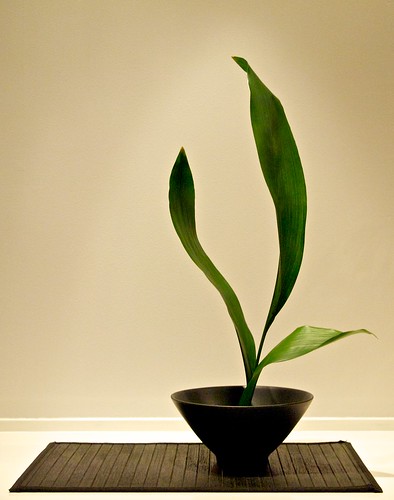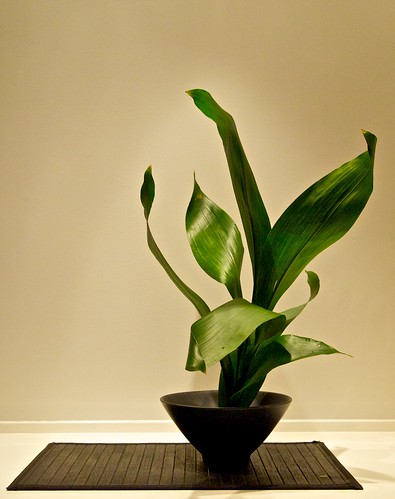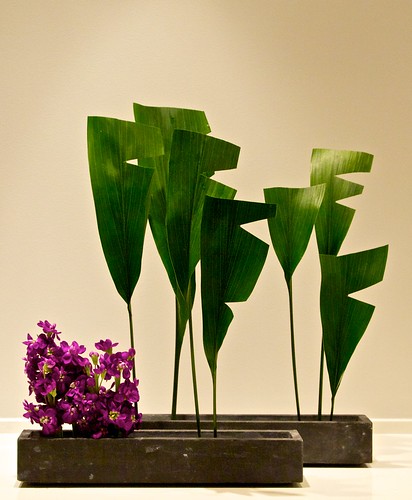The basics of a classical Haran ikebana.
My ikebana teacher loves to quote the expression "Everything starts and ends with Haran" - meaning Haran, or Aspidistra leaves, is the most important material in ikebana. In classical ikebana it is often used as isshu-ike, one material only arrangement, with 7-10 leaves shaped into artistic curves according to detailed rules. The arrangement should show both the sunny (front) side and the shadow (back) side of the leaves, as well as the side view. The basics is the triangular shape with three lines put together to form a balanced and harmonious design. I actually find this basic skeletal quite appealing. Today when we are often looking for simplicity and calmness we might not need the rest of the leaves that makes the arrangement more complex and crowded.
Classical Haran ikebana the Sogetsu way.
In the Sogetsu School classical ikebana is taught as an insight to traditions giving a deeper understanding of the meaning of ikebana. Not going to much into the strict rules of a traditional ikebana arrangement, but rather imitating the style to get a feeling of what it's all about. Creating an arrangement like this is actually quite demanding and takes a lot of practice if you should do it according to all the rules. An obvious mistake in my attempt is that the base is not clean enough. It should be one clear and thin line as in the first picture. To manage this you need to have both large and smaller leaves so that you can get the right size without having to cut the long stem. Haran is also much used in modern, abstract ikebana. This of course is much less time consuming, and shows the leaves from a totally different point of view.















No comments:
Post a Comment